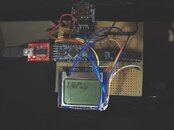Hi,
i have been reading up on this and i think it's completely awesome!
For some years now i've been thinking of making my own dive computer (not to replace my current uwatec Smart Z, but just as an extra). Mostly to see if it can be done.
I have been tinkering with the arduino platform for some time, i'm a programmer by occupation, so my main focus has been on the software side of things, but i've been building up knowledge of the external parts and basic electronics.
My biggest problem has been in finding local (Dutch) suppliers for most of the components used, you have some awesome stores in the US that i do not have access to here.
Anyway, long story short: Are you willing to set up something collaberative on github or some similar platform? To share both the source and the schematics? I would be interested in extending this platform with tissue saturation calculations which, luckily, are readily available now.
I'm also looking at piezo switches as in the Weikamp open source computer to be able to operate the device underwater.
Anyway, great work so far! Hopefully you'll bring this to completion!


